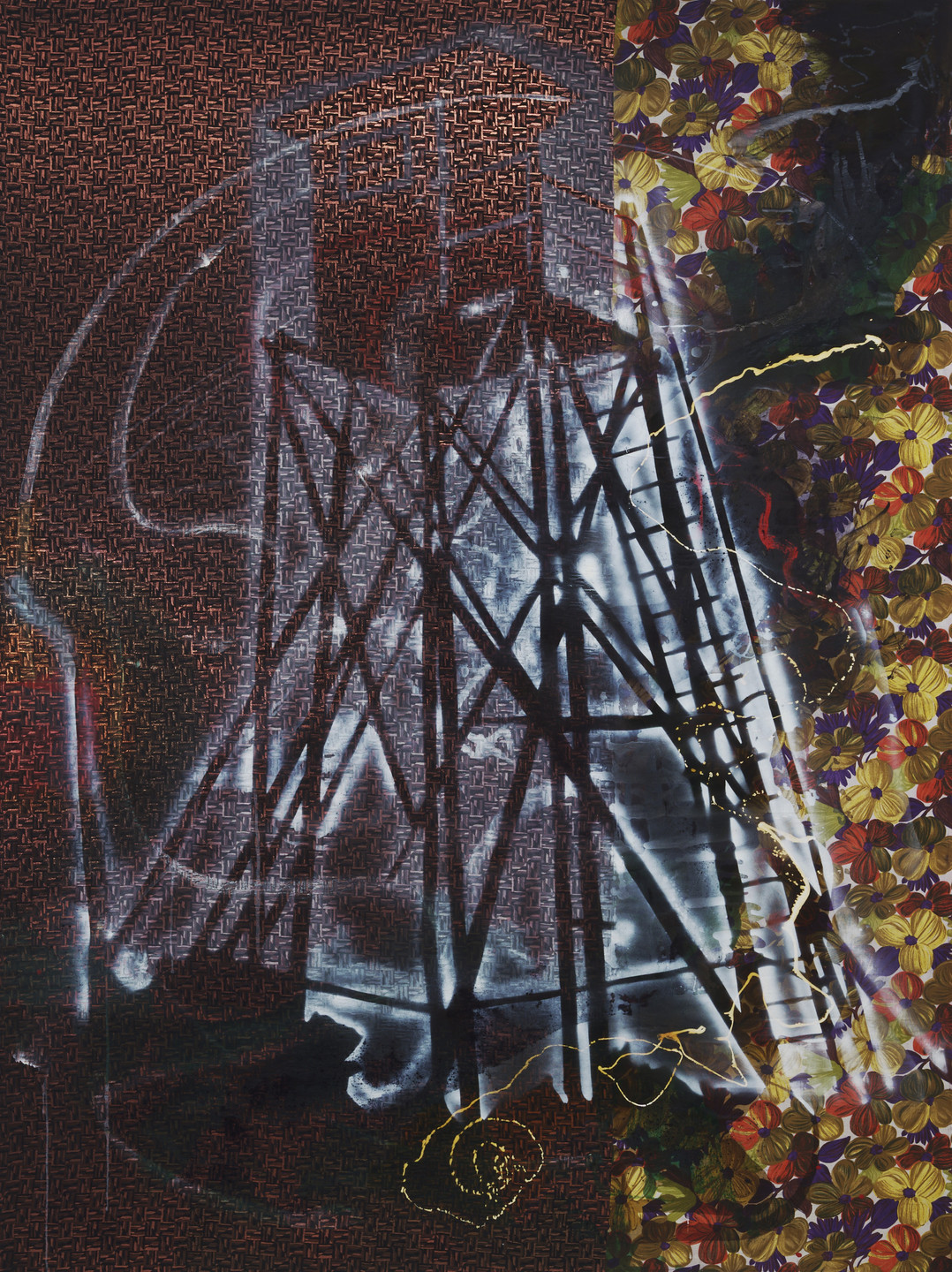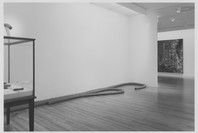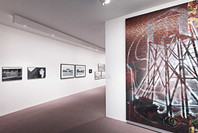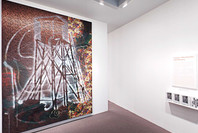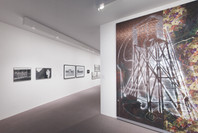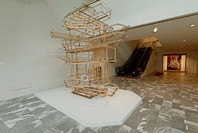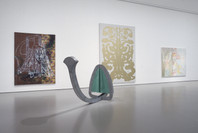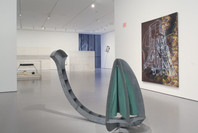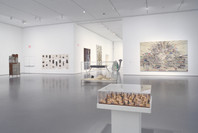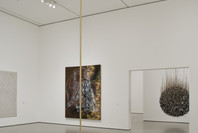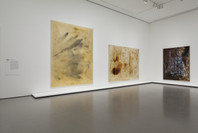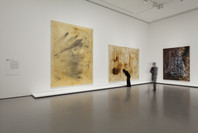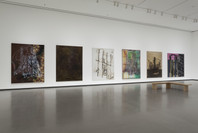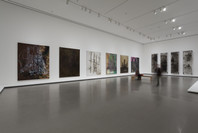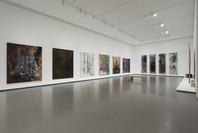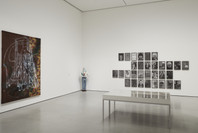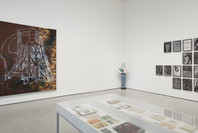The high scaffold in Watchtower could be a hunters' blind but also whispers of the guards' post—perhaps on the East-West border within a still-divided Germany, perhaps on a concentration-camp fence. Polke stenciled this skeletal frame in a series of paintings begun in 1984, varying the imagery around it. Here, he clothes the watchtower in a baleful phosphorescent glow, which sends up a hollow arm to catch the tower's top.
In the 1960s Polke had produced what he called "Capitalist Realism," a German variant of Pop art. An element of Pop survives in Watchtower's support, made of commercial yard goods printed, respectively, with a cheerful floral and with a weave or mesh. Refusing consistency, however, Polke combines these with both the sinister tower image and an abstraction (which, with its alternately smooth and spidery lines, suggests more than one painting process). Images and styles from different eras, and associated with different moods and intentions, jostle and layer in the same work—a "postmodern" approach that Polke pioneered, and that a variety of artists explored in the 1980s.
Visual layering brings a layering of sense. In Watchtower, painted and printed images compete for visibility; if the watchtower is haunted and haunting, the prints connote a banal dailiness. It is as though different registers of consciousness and of memory were struggling for resolution.
Publication excerpt from The Museum of Modern Art, MoMA Highlights, New York: The Museum of Modern Art, revised 2004, originally published 1999, p. 306.
When Polke made this painting, in 1984, he might have had in mind the hundreds of watchtowers that lined the Berlin Wall. He might also have been thinking of the towers circling the concentration camps of the Nazi era, forty years earlier; or of both. Polke’s surveillance tower is illuminated by a ghastly shimmer. It is painted, by stencil, on two swaths of cheap commercial fabric, one harsh and mechanical, the other gaudy and floral. Do these patterns respectively index the communist and the capitalist ideologies of the divided Germany after World War II? If so, neither is particularly alluring.
Gallery label from 2020
